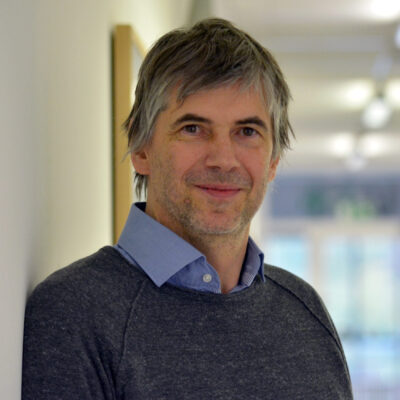Many private individuals refrain from investing in shares for fear of losing their money. Experts in probability theory at Bielefeld University’s Center for Mathematical Economics (IMW) are analysing various forms of uncertainty in complex systems. This should enable them to perform more reliable assessments of future trends in financial products together with the risks they involve. One of these experts is a junior professor who heads a subproject on model uncertainty at Bielefeld University’s mathematically oriented Collaborative Research Centre 1283. Three questions to the economist Dr. Max Nendel:
What approach are you taking to better understand how investments develop in the financial sector?
In financial mathematics, the growth of investments is always dynamic—that is, investments develop over time. A prime example of dynamic processes is a share price, because it is time-dependent and random. To calculate the risks of financial investments, for example, I apply dynamics based on the work of the 19th-century mathematician Andrey Andreyevich Markov: Markov processes. Their special feature is that they are what can be called ‘memoryless’. This means that we do not look at the complete past of a financial product in order to define expectations for the future, but we examine the process at a specific point in time. The process ‘forgets’ its entire past. So, how a share price performs depends only on current conditions and not on past factors. Usually, this assumption is based on the fact that all information from the past has already been factored into current prices.
You are carrying out research on model uncertainty. How does that relate to financial products?
In January, I took on a new research project at the Collaborative Research Centre 1283. It is addressing mathematical solutions for uncertainty and randomness. My project is about measuring model uncertainty. When we develop a model, we base it on assumptions about several parameters that each show different uncertainties. One such parameter is the volatility, for example. It indicates how much prices and rates vary within a set period of time. It is difficult to estimate, and is therefore often uncertain. Another parameter, in contrast, can be estimated relatively accurately: that is the drift. It usually describes the trend taken by a stock price. If we want to calculate the price for a financial derivative or an insurance policy, we have to take a close look at the individual parameters. In the case of complex uncertainties, these can be infinite in number. The uncertainties in classical insurance policies are usually relatively low, because there is sufficient data at hand. In the area of catastrophe risk, however, the starting position is different. Since often only little data are available, one way to help assess risks better is to consider several models simultaneously.

© Bielefeld University
How can uncertainties be made more tangible and risks be better assessed?
Our research underlines that in many situations, it is useful to start from the extremes when measuring uncertainty. In the financial world, starting from the most extreme leads to valuations that can help reduce the probability of institutions defaulting. Our research project is investigating complex forms of uncertainty in this context. Let me illustrate this with an example: assume that there is no correlation between ‘a stone falls to the ground in Bielefeld’ and the ‘share price of XY’. This assumption is very likely to be correct. However, there might also be a correlation between the two. Our aim is to weaken these types of relations between risk factors. One major mistake in the 2007 global financial crisis was that certain factors were wrongly assumed to be independent from each other. Nowadays, financial regulators demand that uncertainties about model assumptions should also be included to reduce default risks.





